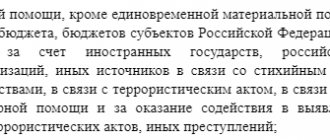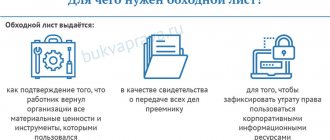The main method of paying alimony is its monthly transfer from the income of the alimony payer. Since alimony is paid over a fairly long period, circumstances may arise in which the payer cannot fulfill his obligations every month. In this case, the question arises: is a lump sum payment of alimony acceptable?
Basic information
The procedure for collecting child support from a husband who has been sentenced to imprisonment is based on a writ of execution.
There are two ways to obtain an executive document.
- Drawing up an alimony agreement. The mother must, based on a peaceful agreement, determine with the father the procedure for transferring child support payments. The head of the institution will act as a notary - he will need to certify the drawn up agreement. After this, the organization’s accounting department will begin to deduct from the father’s income the amount of money specified in the alimony agreement.
- Applying to the court for help. If it was not possible to reach an agreement with the child’s father, the woman must go to court. The court will issue a writ of execution, which will need to be handed over to the organization’s accounting department. You can submit the document yourself or through FSSP employees.
Next, we consider the sequence of actions that must be taken to collect alimony payments from a prisoner in court.
Going to court
Some people mistakenly believe that it is not possible to collect alimony payments from a convicted person, but this is not the case. A parent serving a sentence in prison can be subject to a claim for child support payments.
The claim may be sent to the residence address of the interested party, or to the address of the prison.
The claim will require the following information:
- name of the court;
- information about the plaintiff and defendant: full name, location address;
- information about the marital union: duration of marriage, presence of common minor children;
- sentencing information;
- an indication of a difficult financial situation due to the presence of children and the inability to provide for them independently;
- request to assign alimony from the prisoner in accordance with the procedure established by law;
- list of attached documentation;
- date of filing the claim, signature of the applicant.
Download a sample statement of claim for the collection of alimony for a child/children
The required documents include the following:
- a copy of the plaintiff's and defendant's passports;
- certificate from the residential address of the plaintiff and children;
- a copy of the certificate of registration of the marital union;
- a copy of the birth certificates of the children;
- plaintiff's salary certificate.
- a copy of the court verdict;
The jailed defendant will be informed of the pending case. If the claim is filed at the plaintiff’s residence address, the court may instruct another judicial institution at the location of the colony to interview the defendant and draw up a protocol on the questions asked of him.
Taking into account the position of the defendant, the court will make an appropriate order to collect alimony payments from him.
If the spouses are still in an officially registered union, then the plaintiff has the right to demand a divorce along with a request to establish financial obligations for the payment of alimony. At the same time, the legislation allows you to divorce a convicted person in the registry office on your own initiative, even if the couple has small children. There is one condition, the person must be sentenced to at least 36 months in prison.
The mechanism for the occurrence of alimony obligations
Since the method of payment of alimony we are considering - both as a percentage of income and as a fixed amount - is applied only to minors, then it is enough for a parent defending the right of a minor child to financial support to prove that the second parent is indeed either the mother or the father of the minor. In other words, the existence of a family relationship between an adult and a child should be documented.
This is done with the help of a birth certificate issued by the state registry office, where information about each of them is entered in the columns about the father and mother. If one of the parents refuses to go to the registry office and register in the register as a parent, he (she) can be forced to do this through the court, asking the court to establish maternity (paternity) in the statement of claim.
In addition, family relationships can arise between an adult and a child who are not blood relatives to each other. This is possible through adoption, for which the registry office issues a corresponding certificate to the adoptive parent. Receiving a certificate means that the adoptive parent assumes the rights of a parent in relation to the adopted child, undertakes, among other things, to financially support the minor and, in cases established by Russian legislation, pay him alimony.
The presence of 1 of these 2 documents (birth certificate or adoption certificate) is enough for the court to make a decision on the alimony case in favor of the alimony recipient. The plaintiff has no legal obligation to prove the amount of income of the alimony payer, justify the child’s need for alimony and other circumstances.
How to collect alimony from income
The accounting department will collect a certain amount of money from the income of the convicted person every month.
The following payments to the prisoner are subject to withholding:
- salary;
- pension payments;
- other income.
Attention! First, alimony payments are withheld from income, and then taxes, other mandatory deductions, and financial expenses of the institution for the maintenance of the person are withheld.
The prisoner must receive at least 25% of his earnings after all deductions. Sometimes he has the right to claim a mandatory minimum of 50% of his earnings. But if, for example, a parent wants to transfer all of his income to the child, then the court will not allow him to do this - a certain amount must remain in the hands of the prisoner.
After the convict’s salary has been accrued, the enterprise’s accounting department makes all necessary deductions within 3 days.
Methodology for calculating alimony
For working people
Let's consider 1 example: the ex-spouse has an official job in Nizhny Novgorod, where he earns a “white” salary of 6,000 rubles. In addition, in the evenings he works part-time as a “master for an hour”, earning an average of 25,000 rubles from this activity. in 1 month. At the time of filing the claim, the ex-wife did not attach to the application a calculation of expenses for her only common child. How to calculate the amount of alimony using the mixed method in this case?
- Firstly, one fourth of the official salary will be collected in favor of the minor. 25% from 6,000 rub. equals 1500 rubles. Keep in mind that if in fact the ex-husband’s salary is, for example, not 6,000 rubles, but 20,000 rubles, then the actual amount of earnings must be proven in court. In most cases, this is impossible, since employers do not want to reveal fraud with an artificial reduction in wages in the accounting department.
- Secondly, we determine the size of the children's subsistence level in the Nizhny Novgorod region. It is equal to 9641.50 rubles. According to the Family Code, parents are obliged to equally support their children. Consequently, the recipient of alimony has the right to expect to receive 50 percent of the subsistence level in favor of the child. This amount is 9641.50 rubles. x 50% = 4820.75 rub.
Now we calculate the total amount, which is 1500 rubles. + 4820.75 rub. = 6320.75 rub.
Let's consider example 2: the ex-spouse has an official job in Nizhny Novgorod, where he earns a “white” salary of 6,000 rubles. In addition, in the evenings he works part-time as a “master for an hour”, earning an average of 25,000 rubles from this activity. in 1 month. When filing the claim, the ex-wife attached to the application a calculation of expenses for her only common child. According to the calculation, it turned out that 18,000 rubles were needed monthly to provide for a minor. How to calculate the amount of alimony using the mixed method in this case?
- Firstly, one fourth of the official salary will be collected in favor of the minor. 25% from 6,000 rub. equals 1500 rubles.
- Secondly, if the ex-wife is able to work, then she must equally provide for her child as her ex-husband. Consequently, expenses for a child are divided in half, i.e. 18,000 rub. / 2 = 9000 rub. This is the amount that the father must provide to the child every month. Thus, the amount of alimony assigned in the form of a fixed amount will be 9,000 rubles. – 1500 rub. = 7500 rub.
If the ex-wife is incapacitated, then the court can completely assign all children's expenses to the father. In this case, the amount of alimony assigned in the form of a fixed amount will be 18,000 rubles. – 1500 rub. = 16500 rub.
For the unemployed
For this category of alimony payers, the law does not allow the use of a mixed method of determining the amount of alimony, because alimony as a percentage of income can only be calculated from “white” earnings, which an unemployed person cannot have.
Alimony from a convicted person if he does not work
If a convicted person has no income, this does not relieve him of financial obligations to provide material support for minor children. During the time when a person serving a sentence did not have any income, he will develop a child support debt. After the prison sentence comes to an end and the person is released, he will need to pay off all the accumulated debt.
The amount of debt is calculated according to the average salary in the region of residence of the former prisoner.
At the same time, the alimony holder has a legal opportunity to be freed from repaying the accumulated debt. Judicial practice often demonstrates the following fact: if the colony was unable to provide the prisoner with paid work, then the court will write off the resulting debt for alimony payments, since the parent was not able to transfer money to the child even with a strong desire.
Arbitrage practice
First case. The plaintiff filed a lawsuit, pointing out that her ex-husband, who officially works for a low salary, is engaged in entrepreneurial activities in his free time. For this reason, he has significant income hidden by him. In this regard, she requested that an audit be carried out against her ex-husband in order to establish the true amount of his earnings.
The court sent a request to the tax authorities, who confirmed that several bank accounts were opened in the name of the defendant, where large sums of money were deposited. In addition, systematic transactions of debiting and crediting funds take place on one account.
This evidence confirmed that the ex-husband is engaged in illegal business and has additional income. Therefore, the judge awarded part of the alimony in shares of the “white” salary and part in a fixed amount from additional income.
Second case. The magistrate determined that the defendant is obliged to pay one-fourth of the salary + 3,000 rubles for the maintenance of his daughter. in a fixed amount. The defendant objected to this decision, pointing out that his salary is below the subsistence level, and, in addition, he is obliged to pay a bank loan and compensate for damage to another person due to an accident.
However, the defendant’s arguments were not recognized by the judge for the following reasons:
- In order to pay the loan and compensate for damages due to an accident, the defendant must receive unofficial additional income, which was admitted by the defendant.
- The provision for the minor girl must not be less than the level that existed during the marital relationship of the defendant with his wife.
Let's sum it up
It is possible to collect alimony from a parent even if he is serving a prison sentence. Alimony is established by agreement or on the basis of a court order. The accounting department of the correctional institution carries out all necessary collections from the prisoner’s earnings, and alimony is paid from his income first.
If the alimony recipient did not have the opportunity to work and receive a salary, then by the time he is released he will have accumulated a significant debt. However, he has the right to go to court and cancel the debt if he can prove that, with all its desire, the administration of the institution could not provide him with working conditions.
What can a bailiff do for alimony debts?
To understand what a bailiff can do when collecting alimony debts, it is worth familiarizing yourself with the Federal Law “On Enforcement Proceedings”. The bailiff has a wide range of powers.
If you are wondering whether bailiffs can write off money, then the answer is: they can, and even are obliged to do so. By law, the bailiff has access to personal information and can monitor the movement of funds through the debtor’s accounts. The bailiff has the right to call you to the FSSP department or come to your residential address, make an inventory and seize movable and immovable property. And all this is legal. He can also:
- withhold debt from wages, other income, even unemployment benefits;
- check accounts, deposits, electronic wallets and submit an order to write off money received there;
- arrest and sell property (not only a car, but also expensive equipment, shares, shares in LLCs and other assets - everything that is found, except for the only home),
- prohibit travel abroad,
- temporarily revoke your driving privileges,
- put the debtor on the wanted list,
- impose an administrative fine and even subject to compulsory labor or criminal liability. Article 157 of the Criminal Code of the Russian Federation allows criminal liability to be applied to a person who maliciously evades paying alimony. The bailiffs' website provides comments on its use.
How bailiffs work - law and reality 2021 Related article
For failure to pay alimony, you can go to prison, although this measure is rarely used for the simple reason that it is not profitable for the state to keep the defaulter in prison. It is more rational to force him to fulfill his obligations, and to do this, use the entire arsenal of means to which the bailiff service is entitled.
If you don’t pay alimony, the bailiffs will write off the money from your bank accounts. If there are savings, they will take the entire amount of the debt, and if you receive a salary, pension or income from self-employment on the card, then the bailiffs can write off up to 70% of the monthly income in the case of accumulated alimony debts. You can find out whether enforcement proceedings have been initiated against you by the bailiff for free through the bank of court decisions. Follow the instructions to find out why you were charged.
On their website, bailiffs regularly report on the unusual ways they manage to collect alimony. They meet debtors at the airport, conduct road raids together with the traffic police, and even arrest pets in order to achieve payment of debts.
Such actions do not always comply with the law, for example, the animal must be kept in humane conditions, fed and walked, so bailiffs extremely rarely carry out threats. We described how to challenge the illegal actions of bailiffs, as well as repeated and illegal withdrawals of money here.






